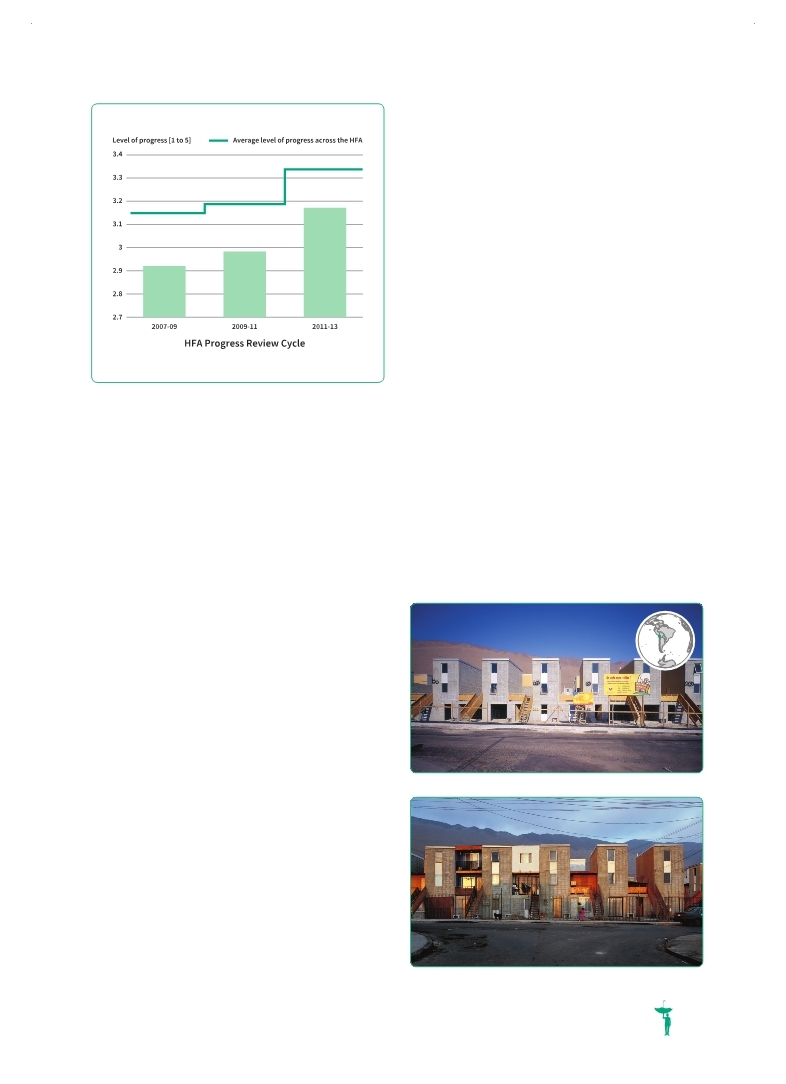 |
Global Assessment Report on Disaster Risk Reduction 2015
Making development sustainable: The future of disaster risk management |
 |
Global Assessment Report on Disaster Risk Reduction 2015
Making development sustainable: The future of disaster risk management |
|
|

221
to a large network of community organizations across the globe that successfully negotiate tenancy rights and access to infrastructure and services for inhabitants of informal settlements (Patel and Mitlin, 2001
Patel, Sheela and Diana Mitlin. 2001,SPARC, the National Slum Dwellers Federation and Mahila Milan, IIED Working Paper 5 on Poverty Reduction in Urban Areas.. . Many governments now have policy frameworks in place to upgrade and regularize informal settlements, which may include the installation of risk-reducing infrastructure such as drainage and slope stabilization. However, as of 2011 around 40 per cent of low-income countries reporting against the HFA did not invest in reducing risk in vulnerable urban settlements (UNISDR, 2011b
UNISDR. 2011b,Hyogo Framework for Action 2005-2015 Building the Resilience of Nations and Communities to Disasters: Mid-Term Review 2010-2011, Geneva, Switzerland: UNISDR.. . UNISDR. 2013a,Global Assessment Report on Disaster Risk Reduction: From Shared Risk to Shared Value: the Business Case for Disaster Risk Reduction, Geneva, Switzerland: UNISDR.. . Figure 11.5 Progress in managing risk in urban environments
HFA Core Indicator 4.4: Planning and management of human settlements incorporate disaster risk reduction elements, including enforcement of building codes.
(Source: UNISDR with data from the HFA Monitor.)
Figure 11.6 Social housing redefined: Quinta Monroy, Iquique, Chile
(Source: Tadeus Jalocha and Christobal Palma.)
planning and management in itself, particularly in higher-income countries, or has occurred in the context of other frameworks, especially in climate change adaptation, rather than the disaster risk reduction sector.
Building on a tradition of supporting household and community efforts in informal urban development that began in the 1960s (Turner, 1972
Turner, John. 1972,Freedom to Build: Dweller Control of the Housing Process, New York: Macmillan.. . McGuirk, Justin. 2014,Radical Cities: Across Latin America in Search of a New Architecture, Verso Books.. . |
 
Page 1Page 10Page 20Page 30Page 40Page 50Page 60Page 70Page 80Page 90Page 100Page 110Page 120Page 130Page 140Page 150Page 160Page 170Page 180Page 190Page 200Page 210Page 211Page 212Page 213Page 214Page 215Page 216Page 217Page 218Page 219Page 220Page 221Page 222->Page 223Page 224Page 225Page 226Page 227Page 228Page 229Page 230Page 231Page 232Page 233Page 234Page 235Page 240Page 250Page 260Page 270Page 280Page 290Page 300Page 310
|
|
 
|
 
|
